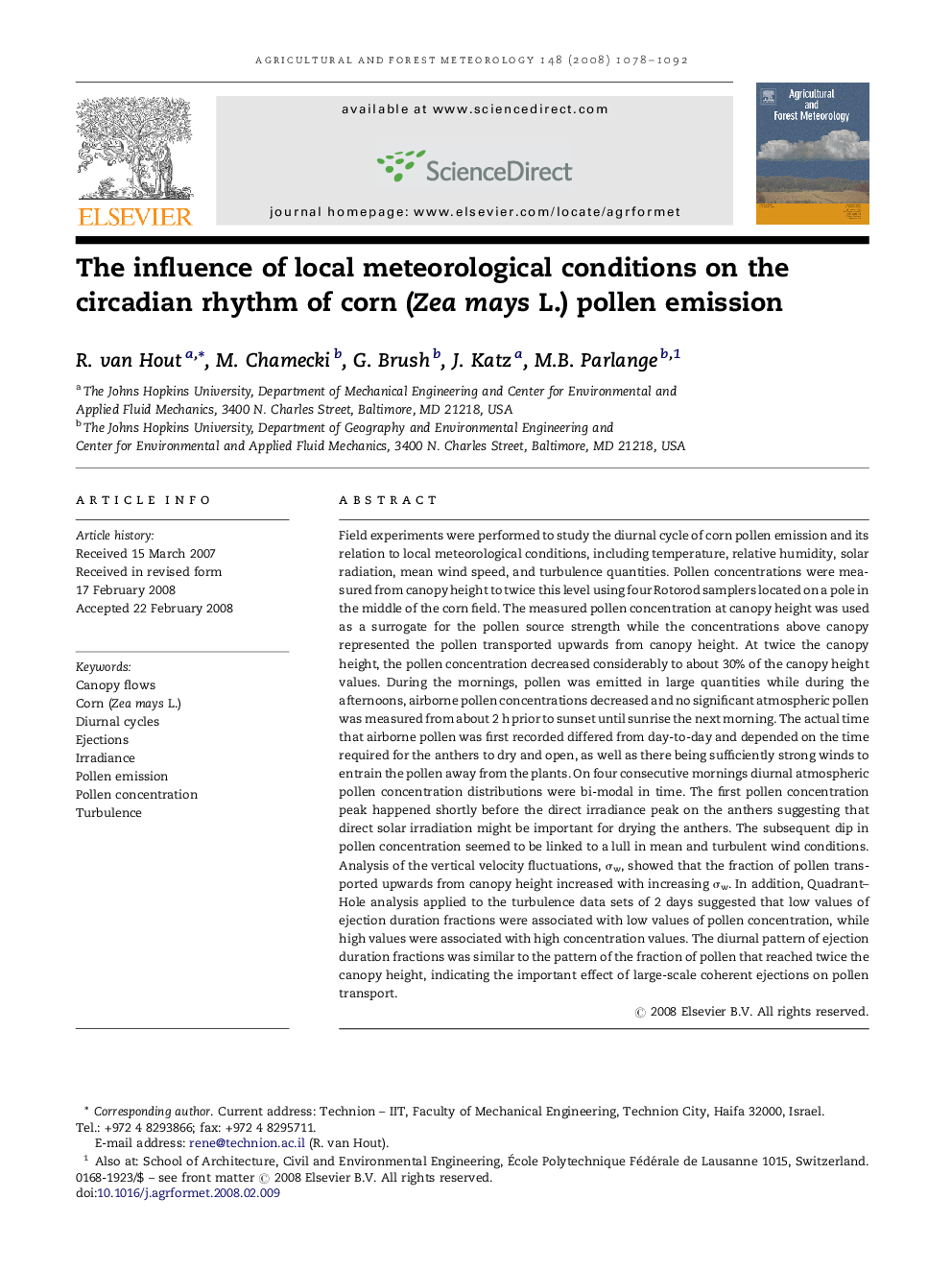| کد مقاله | کد نشریه | سال انتشار | مقاله انگلیسی | نسخه تمام متن |
|---|---|---|---|---|
| 82794 | 158416 | 2008 | 15 صفحه PDF | دانلود رایگان |

Field experiments were performed to study the diurnal cycle of corn pollen emission and its relation to local meteorological conditions, including temperature, relative humidity, solar radiation, mean wind speed, and turbulence quantities. Pollen concentrations were measured from canopy height to twice this level using four Rotorod samplers located on a pole in the middle of the corn field. The measured pollen concentration at canopy height was used as a surrogate for the pollen source strength while the concentrations above canopy represented the pollen transported upwards from canopy height. At twice the canopy height, the pollen concentration decreased considerably to about 30% of the canopy height values. During the mornings, pollen was emitted in large quantities while during the afternoons, airborne pollen concentrations decreased and no significant atmospheric pollen was measured from about 2 h prior to sunset until sunrise the next morning. The actual time that airborne pollen was first recorded differed from day-to-day and depended on the time required for the anthers to dry and open, as well as there being sufficiently strong winds to entrain the pollen away from the plants. On four consecutive mornings diurnal atmospheric pollen concentration distributions were bi-modal in time. The first pollen concentration peak happened shortly before the direct irradiance peak on the anthers suggesting that direct solar irradiation might be important for drying the anthers. The subsequent dip in pollen concentration seemed to be linked to a lull in mean and turbulent wind conditions. Analysis of the vertical velocity fluctuations, σw, showed that the fraction of pollen transported upwards from canopy height increased with increasing σw. In addition, Quadrant–Hole analysis applied to the turbulence data sets of 2 days suggested that low values of ejection duration fractions were associated with low values of pollen concentration, while high values were associated with high concentration values. The diurnal pattern of ejection duration fractions was similar to the pattern of the fraction of pollen that reached twice the canopy height, indicating the important effect of large-scale coherent ejections on pollen transport.
Journal: Agricultural and Forest Meteorology - Volume 148, Issues 6–7, 30 June 2008, Pages 1078–1092